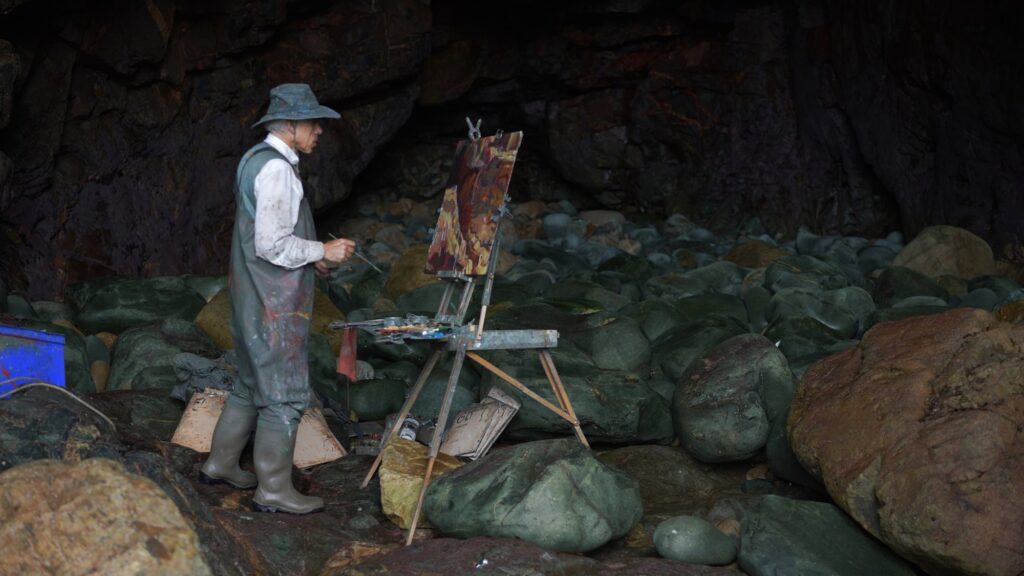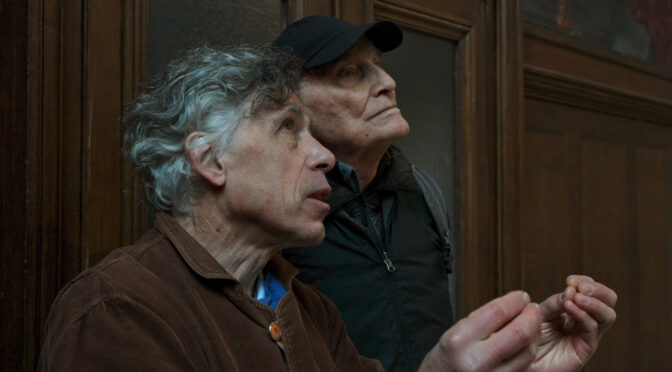Article by Emidio Sciamanna
Translation by Chiara Rotondo
An elderly painter climbs the steep cliff face of Brittany’s coastline, wearing worn-out clothes and holding his palette, easel and brushes in hand. Upon reaching a secluded grotto, he is free to express his imagination against the stunning coastal backdrop. This is the opening scene of Barbet Schroeder’s latest documentary, Ricardo et la peinture (“Ricardo and painting”), which premiered Out of Competition at the 41st Turin Film Festival.
The serene daily existence portrayed in the artworks of Ricardo Cavallo, an Argentinian-French artist, is characterised by his close connection with the natural world. This vibrant relationship is reflected in his use of colour and technique which flow onto the canvas like a powerful river. Over time, Cavallo has devoted much of his life to en plein air painting, capturing the diverse aspects of the world around him. The mild sunshine and the soothing sound of rainfall accompanied him during this pursuit. Schroeder’s gaze upon his painter friend is sincere and fraternal, delineating the features of a serene and modest man in constant dialogue with art and all that surrounds him, in perfect harmony with the relaxing soundtrack signed by Hans Appelqvist.

If the extended static shots create a nuanced and impartial portrayal, certain monologues from the artist express a genuine fondness and unreserved admiration for the revered masters of the past. From Monet to Seurat, from Cézanne to Velázquez: each time Cavallo discusses his primary inspirations, he engages in a captivating digression on the history of art. His anecdotes create a seductive and contemplative journey, outlining the unconventional traits of his rigorous yet extravagant creativity, fragmented and deconstructed like his gargantuan works. The author’s paintings consist of numerous interchangeable panels and tangible multi-faceted units. These artworks intersect with the director’s aesthetic vision and provide two distinct perspectives on nature and the fleetingness of time, on old age and the nostalgia for childhood.
It is vital to preserve and pass down a passion for art to the succeeding generations, to safeguard the valuable teachings of the past from oblivion due to conformity. Ricardo Cavallo himself reminds us of this at the end, just before plunging back into painting: “Real life is found in inventiveness and imagination. It is important to bear this in mind and live fully”.

